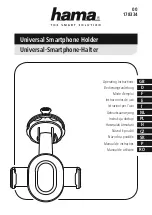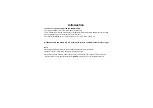
U.S. FDA
102
C56 Tuna AE, A31008-H5xxx-Ax-1-xx19 (14. January 2003, 12:52)
©
Si
em
en
s A
G
20
01
, G
:\M
ob
il\L
55
\C
T5
6\
am
_V
er
si
on
_2
\c
56
_FD
A.
FM
• World Health Organization (WHO)
International Commission on
Non-Ionizing Radiation Protection
(select Qs & As):
http://www.who.int/emf
• United Kingdom, National Radio-
logical Protection Board:
http://www.nrpb.org.uk
• Cellular Telecommunications In-
dustry Association (CTIA):
http://www.wow-com.com
• U.S. Food and Drug Administra-
tion (FDA) Center for devices and
Radiological Health:
http://www.fda.gov/cdhr/
consumer/
1
Muscat et al. Epidemiological Study of Cel-
lular Telephone Use and Malignant Brain
Tumors. In: State of the Science Sympo-
sium; 1999 June 20; Long Beach, California.
2
Tice et al. Tests of mobile phone signals for
activity in genotoxicity and other laboratory
assays. In: Annual Meeting of the Environ-
mental Mutagen Society; March 29, 1999,
Washington, DC; and personal communica-
tion, unpublished results.
3
Preece, AW, Iwi, G, Davies-Smith, A,
Wesnes, K, Butler, S, Lim, E, and Varey, A.
Effect of a 915- MHz simulated mobile
phone signal on cognitive function in man.
Int. J. Radiat. Biol., April 8, 1999.
4
Hardell, L, Nasman, A, Pahlson, A,
Hallquist, A and Mild, KH. Use of cellular
telephones and the risk for brain tumors; a
case-control study. Int. J. Oncol, 15: 113-
116, 1999.
Summary of Contents for CT56
Page 1: ......








































